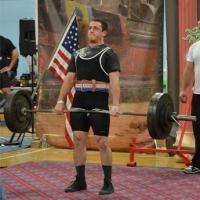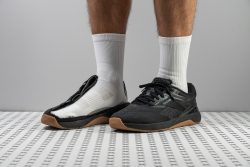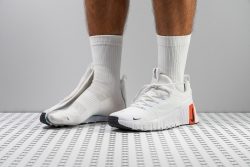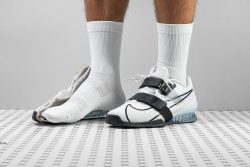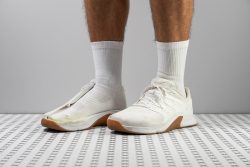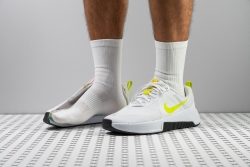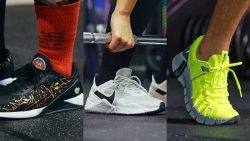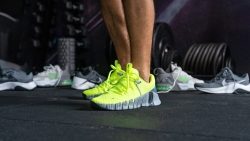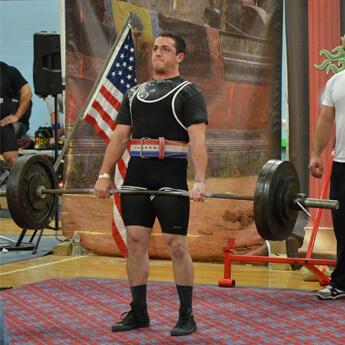7 Best Training Shoes in 2025
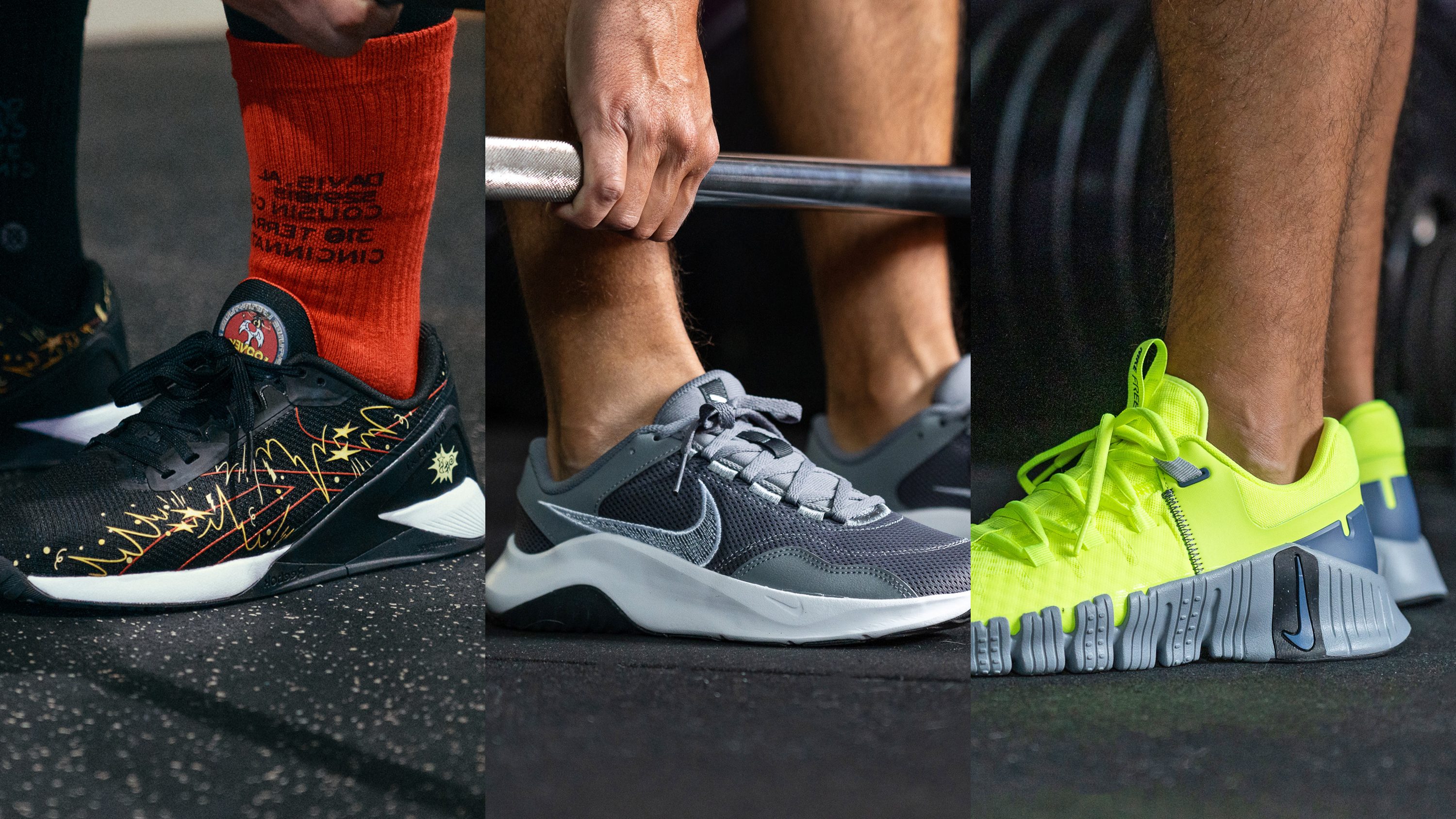
We buy shoes ourselves. We earn commissions when you buy through us, at no extra cost. Why trust us
Training shoes are designed for every imaginable activity at the gym: jumping, lifting, rowing, and more. Some trainers are more geared towards weightlifting (wide sturdy base with a raised heel), while other shoes have plenty of cushioning for non-stop jumping.
We have reviewed numerous training shoes to help you choose the best. We also selected our top picks in different categories for your convenience.
How we test training shoes
At RunRepeat, we aim for the most objective and elaborate shoe reviews. Thus, our process includes the following:
- Buying shoes with our own money. We believe that to be able to share pure facts about the shoes, it is important to avoid any sponsorships or donations, especially from brands.
- Personal shoe impressions. We wear-test each training shoe. From strength and endurance training to core and balance, we do various exercises to get a complete review of the shoes.
- Lab testing. We perform over 30 tests and even cut the shoes in half to measure their features: stack height, heel drop, shock absorption, heel counter stiffness, traction, etc.
Best training shoes overall
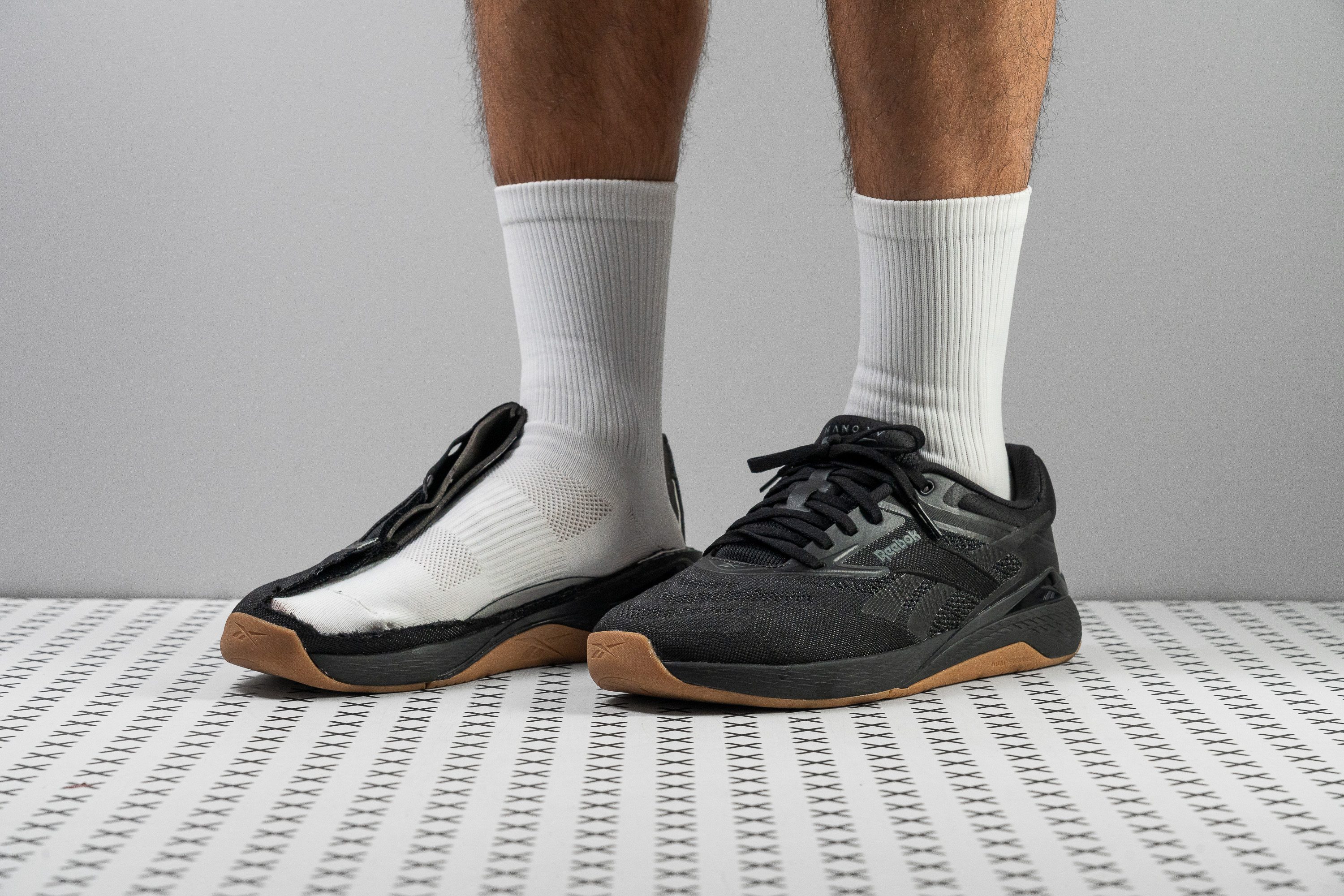











































What makes it the best?
The Reebok Nano X5 proves in our gym sessions that we can have one shoe for whatever workout we have for the day. Lab tests verify what we experienced: the Nano X5 has cushioning that performs, supports, and comforts. Therefore, it’s our best training shoe overall.
The Nano X5 features the DualResponse cushioning, which is responsive and protective up front, while stable at the back. It keeps us supported through every rep, with its strong ground feel in the heel (80 SA) and its impact-dampening forefoot (71 SA).
As seen in the midsole’s name, the Nano X5 adds a touch of bounce every time we take off during box jumps, high knees, and runs. Testing for the forefoot, we recorded an above-average energy return of 58.4%.
When it comes to lateral movement, the TPU cage secures our footing so that we don’t lose balance. Its stiffness generates lots of twist resistance, proven by its maximum 5/5 torsional rigidity score, and creates a stable experience.
However, this trainer isn’t the most agile shoe because of its heavy 12.0 oz (340g) build. Those who prioritize a lightweight feel should try alternatives.
Pros
- Versatile for all-around gym use
- Increased impact protection in the forefoot
- Very planted and stable heel
- Fantastic durability and wear resistance
- Padded and comfortable step-in feel
- Secure foothold and containment
- RopePro protection for rope climbs
Cons
- Lacks grip on wet and dusty floors
- Not for wide feet
- Heavier than average
Best training shoes for HIIT
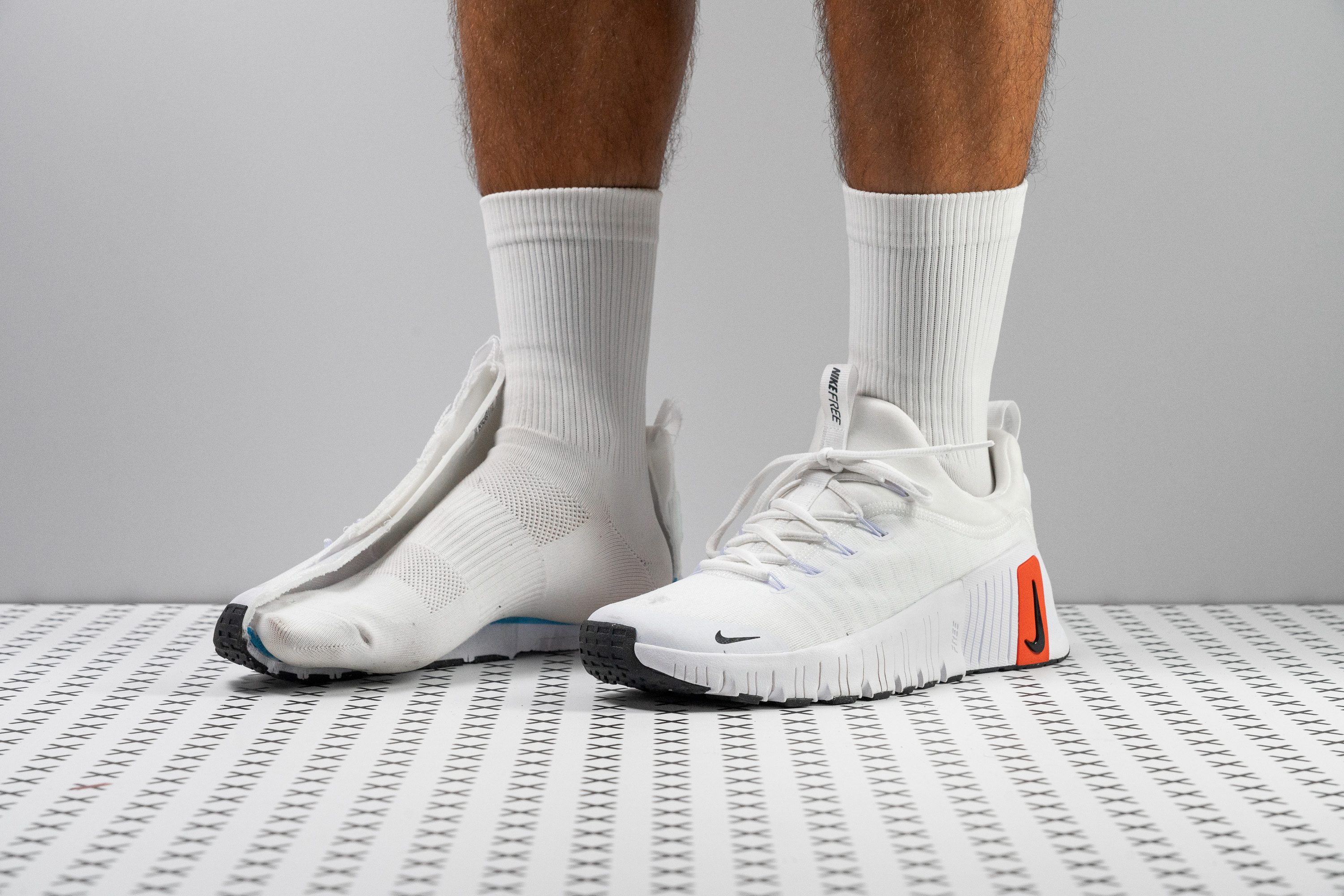





















































What makes it the best?
Nike Free Metcon 6 has a versatile yet supportive midsole, making it our top HIIT trainer among lab-tested shoes. In our workouts, it's undeniably flexible and weightless, allowing us to move liberally with less effort. It offers reliable stability that instills a sense of security as we perform various exercises.
At the forefront is the agile midsole, further enhanced by deep cutouts in the outsole. From twisting to bending, Free Metcon 6 surrendered with ease. Further testing confirms it needs 18.9% less force than average to bend to 30 degrees. Meanwhile, in our torsional rigidity assessment, it received a low 2/5 score.
The stack had a good mix of cushioning and ground feel, infused with velvet foam for comfort. Our durometer reveals it’s 17.9% softer than average, ensuring a zero-pain experience for heated sessions. This shoe has an extended midsole width of 113.9/94.4 mm and has a firmer 27.8 HA foam under our heels for secure landings. We felt surefooted as we did jump ropes, burpees, planks, and lunges.
This trainer's exceptional airflow and weightlessness deliver an energizing lift. Our scales confirm a mere 9.7 oz (274g), while we awarded it a 5/5 breathability score in our smoke test. Unfortunately, the delicate upper compromised durability. We recommend avoiding rope climbing and other abrasive surfaces to preserve the shoe’s life.
Pros
- Fantastic breathability
- Very light on foot (lighter than average too)
- Abundant cushioning for HIIT
- Most flexible cross-trainer ever
- Excellent stability for moderate weightlifting
- Sock-like fit in a bootie upper
- Accommodating toebox (for medium feet)
- Great grip on gym surfaces
Cons
- NOT for rope climbs (lacks protection)
- Can be hard to put on (narrow opening)
Best training shoes for Crossfit















































What makes it the best?
Among all the training shoes we exercised with and lab-tested, Metcon 10 is undoubtedly the best for CrossFit. With its sturdy base and amazing versatility, it performs any WOD exceptionally, from heavy lifts to agility drills.
We did heavy squats, snatches, and deadlifts, and the Metcon’s base assisted us very well even without a raised heel. Our caliper measures its below-average heel and forefoot stack at 22.8/16.2 mm, making us more sensitive to ground feedback. It offers superb lockdown thanks to its supportive upper and raised sidewalls.
Since CrossFit isn’t all about lifting, we tested Metcon 10 by performing box jumps, burpees, rope climbs, and lunges. It proved itself versatile in most CrossFit activities, with an unresisting midsole that flows with our movements. Upon checking with our bend test, it emerged 13.2% more flexible than average.
Metcon 10 provides excellent stability and grip. This boosted our confidence, making us enjoy the WOD even more. In our traction test, the rubber in the heel and forefoot scored a reliable 0.38 rating. With a caliper in hand, we measured the forefoot area to be 115.2 mm wide. This large contact area, together with the non-compressible Hyperlift in the heel, helps stabilize our feet while lifting heavy loads.
We discovered the forefoot lacks protection for repetitive rope jumps or runs over a mile. We recommend exploring cushioned shoes for heavier cardio workouts.
Pros
- More versatile Metcon overall
- One of the lightest Metcons ever!
- ReactX adds shock absorption and energy return
- Increased forefoot flexibility
- Still amazingly stable for weightlifting
- Fantastic upper durability (even for rope climbs)
- Great grip on gym floors
- Highly secure foot lockdown
- Accommodating fit and toebox
- Handy Lace Tuck
Cons
- Outsole could be more durable
- Upper lacks breathability
Best training shoes for weightlifting
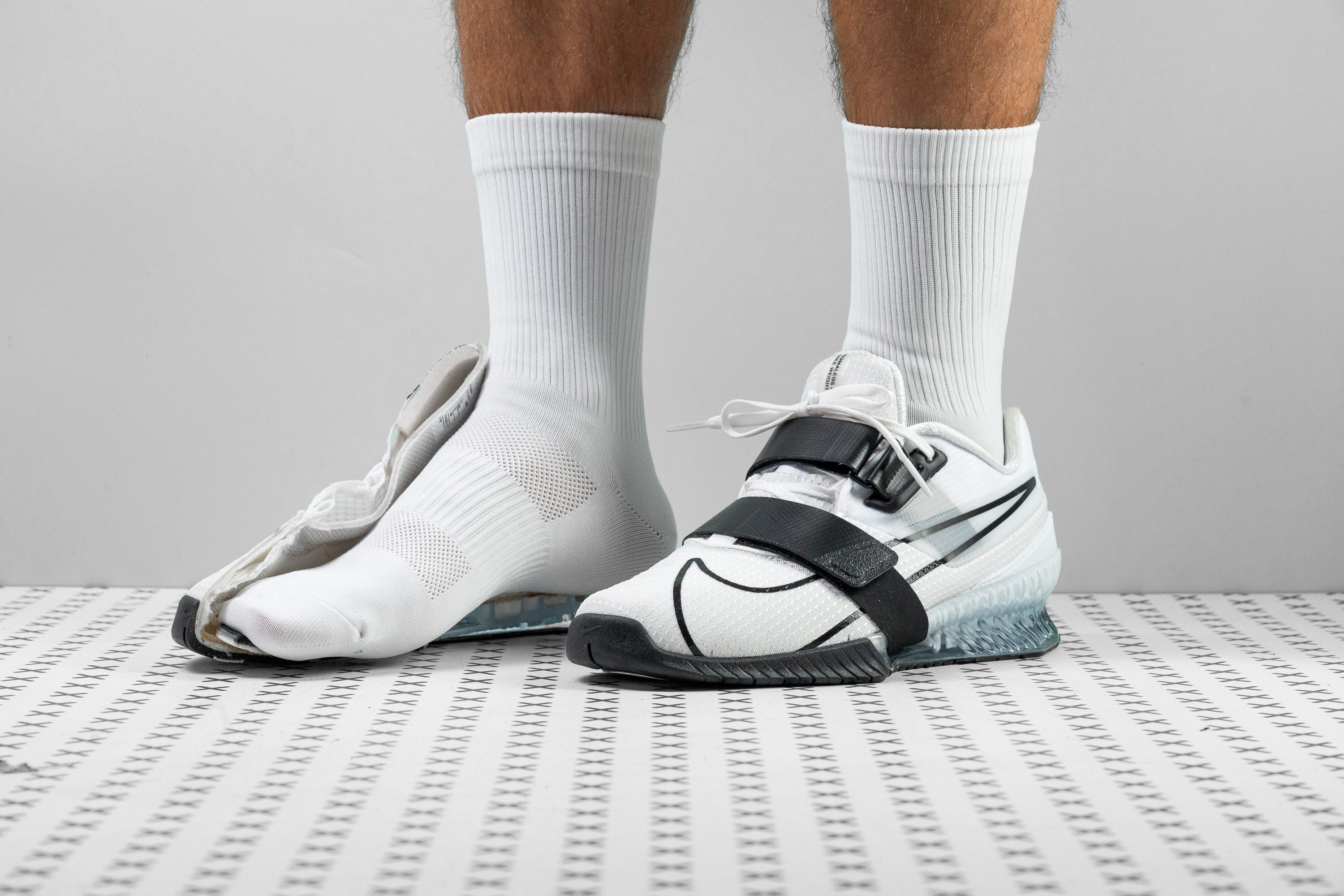





























What makes it the best?
When it comes to lifting, the Nike Romaleos 4 easily rose above other training shoes because of its amazingly firm midsole, impressively wide base, and totally firm structure. Our feet were surely kept in place no matter how heavy we were hoisting above our heads.
We learned through our HA durometer measurements in the lab that the midsole is a lot firmer than average. While the average HA durometer rating is 75.0, the Romaleos 4’s score was as high as 97.0! There really was no wobbliness because of this much firmness.
The wide midsole platform contributed a lot to the shoe’s overall stability. Our caliper measurements revealed that the platform is 111.5 mm (average is 107.1 mm) wide at the forefoot, while it’s 91.3 mm (average is 87.1 mm) wide at the heel.
The shoe’s minimal flexibility also did so much in keeping our feet in place and ensuring that we got the support that we needed. Using our standardized test, we uncovered that we needed to exert 30.0N of force to bend this shoe at 30 degrees. The typical trainer would need only 15.8N.
We just didn’t like that our feet were sweating a lot when inside this shoe. There was not much ventilation! True enough, this shoe only got a 2 out of 5 when we subjected this shoe to our smoke breathability test in the lab.
Pros
- Phenomenal stability
- Sturdy platform and sole
- Better lockdown with two straps
- Comfortable for a lifting shoe
- True to size
- Efficient traction
- Appealing looks
Cons
- Upper lacks durability
- Not for narrow ankles
- Not breathable
Training shoes with the best shock absorption


























What makes it the best?
Since the On Cloudrunner is also a well-loved road running shoe, it ensures well-cushioned landings. It’s ideal for daily mileage and cross-training due to its joint protection and stable, supportive ride. However, in the lab, it stands out the most with the best shock absorption among training shoes.
The Cloudrunner is considered tall for a training shoe, as we measured a stack height of 33.3/20.9 mm with our caliper. Moreover, it returned above-average shock absorption scores of 118 SA in the heel and 72 SA in the forefoot, making high-impact workouts feel kinder to our muscles.
Despite its generous cushioning, Cloudrunner managed to be lighter than the average trainer, weighing only 10.4 oz (294g) on our scales.
The midsole includes the Speedboard and raised sidewalls, which all contribute to our surefootedness. We felt confident tackling single-legged workouts and lifting some weights without losing our footing. In our bend test, it emerged 58.6% stiffer than the average trainer.
However, while contributing to stability, its rigidity may cause some resistance when performing workouts such as lunges and burpees. Those who prefer more fluidity should try alternatives.
Pros
- Unintrusive stability
- Versatile (walking, gym, casual)
- Well-fitting
- Doesn’t catch pebbles
- Good breathability
- Lasting durability
- Appealing design
- Recycled content (30-35%)
Cons
- Not for severe overpronation
- Firm ride
- A bit heavy
- Lacks forefoot cushioning
Best training shoes for wide feet
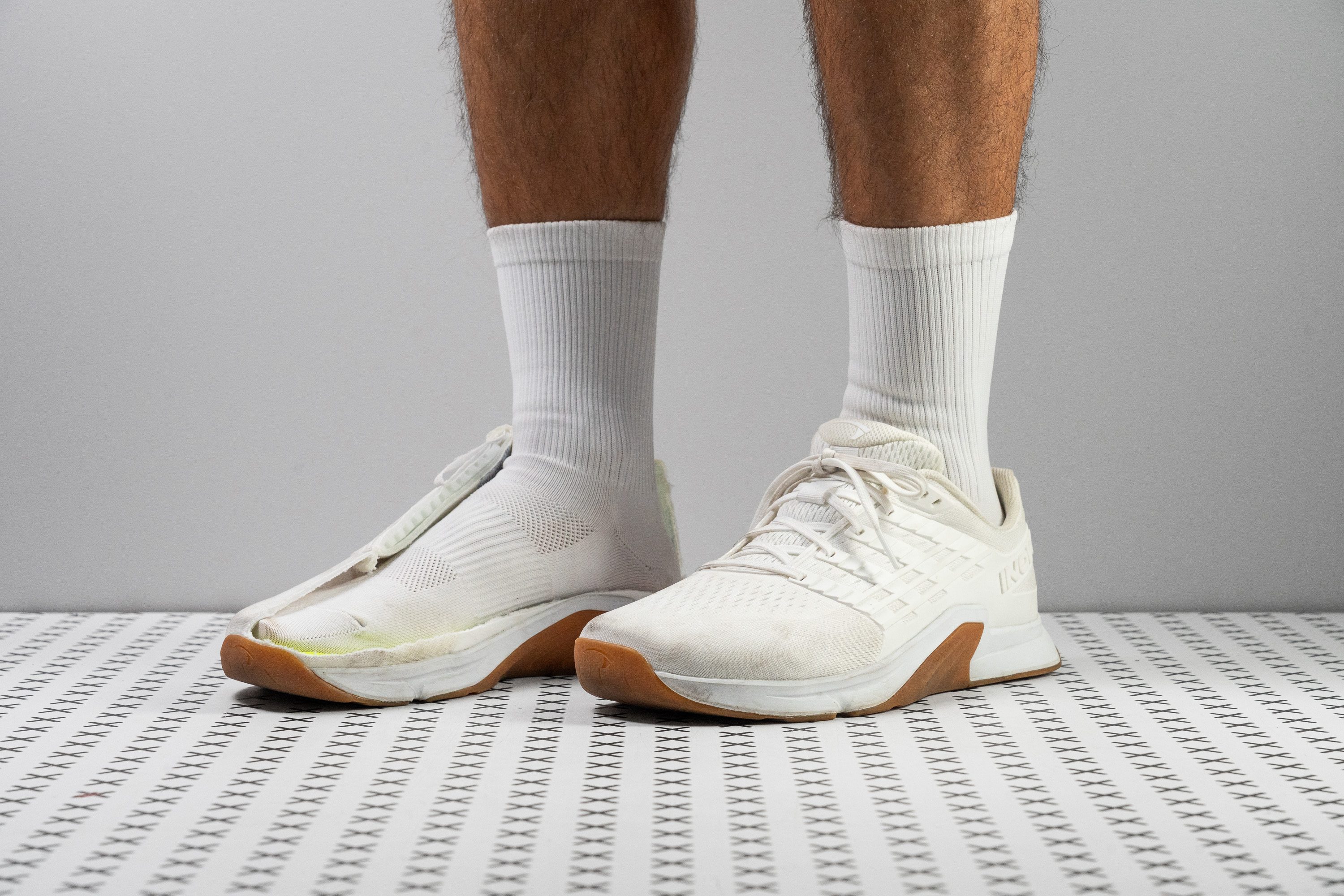










































What makes it the best?
The Inov8 F-Lite can do it all, offering both freedom of movement and surefootedness in a lightweight package. Our lab results verify its versatility, yet it stood out the most during testing with its accommodating fit, making it our best training shoe for wide feet.
We solidified our gel mold inside the shoe to measure its interiors. At the widest part, we recorded 99.6 mm, making the F-Lite 2.3 mm wider than average. Even those with broad feet or bunions won’t have to worry about any pressure points.
Despite its generous measurements, F-Lite stays below the average trainer’s weight at 10.5 oz (298g). Moreover, its effortless sensation is further enhanced by its flexible midsole. Testing F-Lite in our bend test, we found it to be 19.2% more agreeable than average, allowing us to perform burpees and lunges with ease.
When it was time to lift the barbell, the tall sidewalls and Met-Cradle in the midfoot did their job of keeping us steady effectively. It has very little give even when performing sudden lateral movements, proven by its high 4/5 torsional rigidity score.
Sadly, its shine fades on wet or dusty floors because it lacks grip. Gym goers who prioritize dependable traction should go for another shoe.
Pros
- Versatile gym all-rounder
- Great balance of cushioning and stability
- Fantastic for wide feet
- Highly flexible forefoot
- Excellent outsole durability
- Protection for rope climbs
- Lighter than average
Cons
- Lacks breathability
- Not for narrow feet
- Not for heavy lifting
- Below-average outsole grip
Best budget training shoes
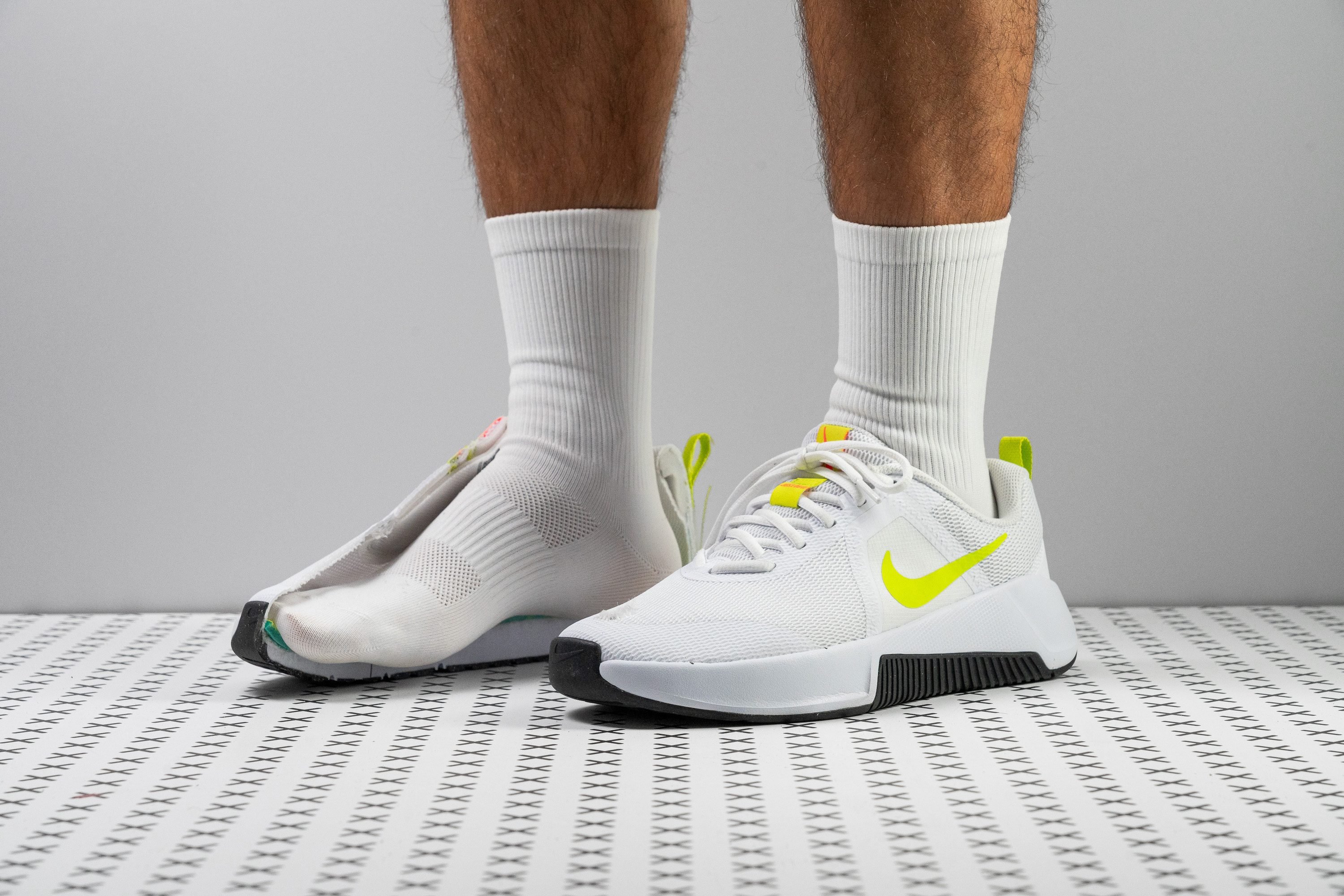

















































What makes it the best?
We got the Nike MC Trainer 3 for only $80 when the average trainer costs $116. Despite its lower price, the comfort it delivers felt luxurious during our workouts—from its breathable upper to its plush cushioning. Our lab tests also confirm its flexibility, making it a highly versatile shoe for most workouts. Therefore, it’s our best budget training shoe.
Every jump we made and every stride we took during treadmill runs felt well-protected from impact. Our caliper shows an above-average stack height of 30.6/21.8 mm, while our durometer confirms the foam is 13.0% softer than average.
MC Trainer 3 bends with our feet as we perform burpees and lunges, highlighting its forgiving ride. The flex grooves in the outsole surely proved their purpose when the midsole only needed 12.3N of force to bend to 30 degrees.
Our heated sessions always felt manageable thanks to the porous upper that refreshed our feet. When we checked for its transparency, the mesh instantly lit up under the light, explaining its perfect breathability rating in our smoke test—however, the delicate upper wreaked havoc against our Dremel. We recommend finding another trainer for abrasive activities like rope climbing.
Pros
- Fantastic value for money
- Highly breathable
- Doesn't drag the foot down
- Better cushioned than v2
- Heel bevel is better for running and walking
- Decent stability for moderate workouts
- Good flexibility for lunges and planks
- Accommodating toebox
- Comfortable padded interiors
Cons
- Not for flat and wide feet (narrow midfoot)
- Upper lacks wear resistance
- Weak outsole grip
What are training shoes?
Training shoes are used for training (duh). They are constructed differently from running shoes as they target exercises that are performed in the gym:
- Aerobic/anaerobic conditioning: jumping, lunging, speed and agility training, HIIT, etc.
- Strength training/weightlifting: squats, deadlifts, cleans, jerks, bench presses, etc.
Depending on the specific set of activities they accommodate, training shoes are also divided into several categories:
- cross-training/workout shoes
- Crossfit shoes
- weightlifting shoes
Cross-training/workout shoes
Can be used for most workouts + light/moderate weightlifting
- a bit more cushioning for cardio and running
- good balance of flexibility and stability
- generally lighter than Crossfit shoes
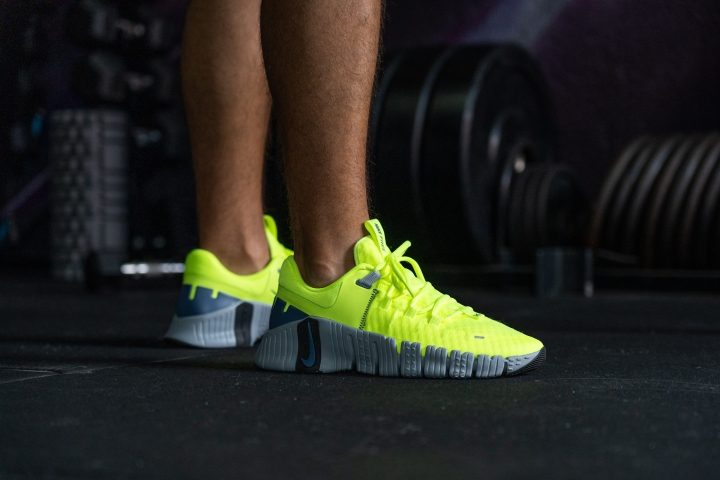
Learn more about cross-training shoes and how to choose the right one for you in our extensive guide.
Crossfit shoes
Can be used for most workouts + moderate/heavy weightlifting
- lower drop, flatter sole for multi-directional stability
- firmer midsole, better for lifting
- more durable (+protection for rope climbs)
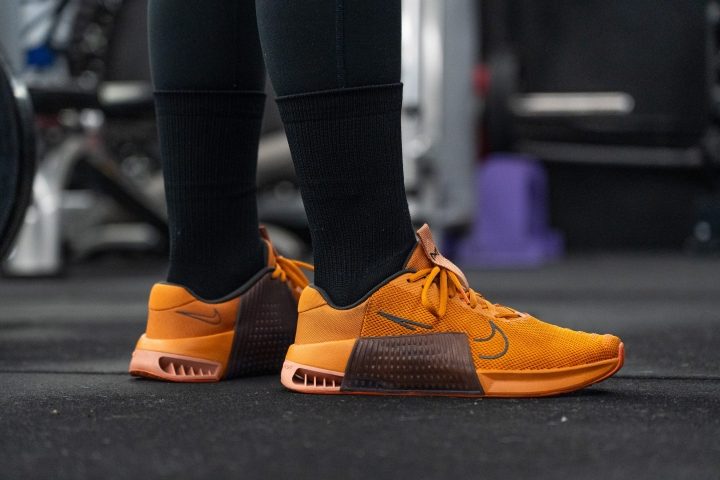
What makes Crossfit shoes different from other cross-training shoes? How to know if you need one and how to find the best one? Find answers to these questions in our guide on Crossfit shoes.
Weightlifting shoes
Can be used for weightlifting only
- elevated heels promote proper squat posture
- hard, non-compressible platforms provide lifting efficiency
- sturdy and secure foothold

See our guide on the best weightlifting shoes for more information on how to choose the right one for you. You can also learn more about the benefits of weightlifting shoes and why some people love wearing Chuck Taylor's in our study-backed research on the topic.
Training shoes vs. running shoes
We do NOT recommend using a pair of running shoes for a gym session. Unless your workout primarily consists of running on a treadmill.
Here are a few reasons why dedicated trainers are a better option for gym use:
|
Training shoes |
Running shoes |
|
support multi-directional movements |
only support linear forward motion |
|
firmer midsole provides stability for weightlifting |
cushioned sole compresses easily under heavy loads which results in wobbling |
|
generally have a wider platform, especially in the heel and forefoot, to keep the wearer sure-footed |
foot has a higher chance of rolling over the edge of the platform if moves laterally |
|
have a flat profile for forward stability |
curved and rockered soles push the foot forward compromising stability when training |
|
have extra protection on the sides for rope climbing |
soft materials get torn and burned by the rope at the very first climb |
Lateral stability test in a training shoe
From the ground up, running shoes are designed for repetitive forward motion. They don't have the foothold, support, or stability needed for fast lateral movements. They are also too soft and cushioned for weightlifting.
Lateral stability test in a running shoe
If you do use running shoes for the gym, make sure they have a firm, wide, and torsionally stiff platform. There are a few running shoes that meet these parameters:

Can you run in training shoes?
The same points that make training shoes perfect for the gym fail them when it comes to running.
The amount of cushioning and impact protection is nowhere near running shoes. Not to mention that training shoes are much heavier and clunkier.
Cushioning in a training shoe
Cushioning in a running shoe
But there is some good news too.
Most cross-training and Crossfit shoes can accommodate short warmup runs of up to 3 miles. That includes short runs on a treadmill, too. Just make sure that these trainers have enough shock absorption and are light enough for that.
Can you walk in training shoes?
Most cross-training shoes have enough flexibility in the forefoot to bend along with the foot. But it doesn't mean they are going to feel comfortable for all-day wear.
Luckily, some cross-training shoes are light, comfortable, and flexible enough for casual wear.
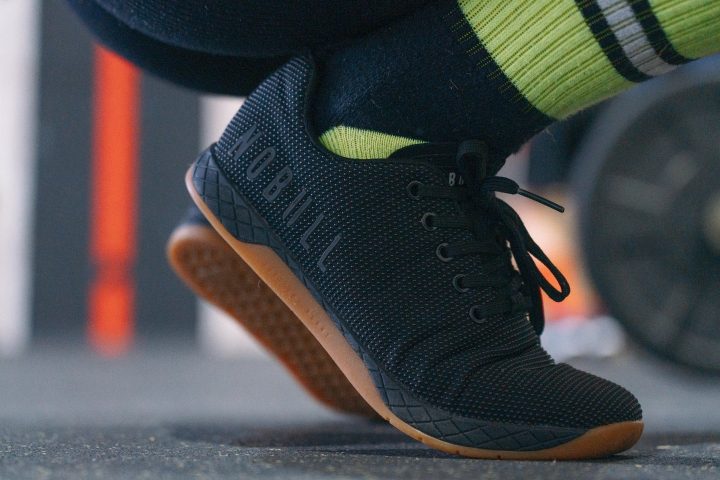
Weightlifting shoes, for example, are awful for walking anything more than 10 steps across the gym. Their hard plastic platform feels extremely clunky when walking.

Crossfit shoes are more foot-friendly and can be worn for hours of coaching at the gym. However, you wouldn't want to wear these expensive, technology-packed trainers outside on the asphalt a lot.
If you need a reliable pair for long hours of walking and standing on your feet, a pair of dedicated walking shoes or walkable running shoes is the best way to go.
What shoes are best for cardio and aerobic workouts?
Fast-paced and dynamic, these workout sessions call for shoes with the following characteristics:
- lightweight (less than 300g per shoe)
- cushioned (at least 80 SA of shock absorption in the heel)
Example of testing the shock absorption of a training shoe in our lab.
Minimalist training shoes
To enhance their training, some people switch to minimalist shoes. These trainers have very thin soles (less than 20 mm in the heel) and low heel-to-toe drops (less than 5 mm), creating a more intimate ground feel.
The benefits of this footwear include:
- increased muscle activation and foot strengthening
- better proprioception and contact with the ground
- more natural foot movement and biomechanics
- no added weight to drag you down
Even though the advantages are many, it is important to start slow when you're transitioning to minimalist shoes to avoid injury.
